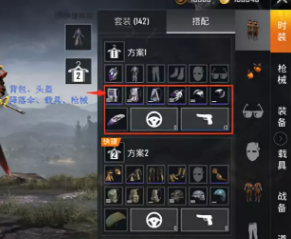what are cryptocurrency backed by snippets
From the technical analysis point of view, today's Shanghai Composite Index has formed a K-line shape with a long shadow line, and the trading volume has been enlarged, which indicates that there is greater pressure on the top and the market divergence has intensified. If tomorrow's index fails to effectively recover today's upper shadow line, and the trading volume continues to maintain at a relatively high level, the index may seek further support. In the short term, some important moving average positions below, such as 60-day moving average and 120-day moving average, will become key support areas. If the index can stabilize near these moving averages, and with the shrinking volume, the market is expected to enter the short-term shock consolidation stage, waiting for a new direction choice. On the other hand, if the index falls below these support levels quickly, it may trigger a new round of decline, dropping to near the previous low.From the internal structure of the market, the phenomenon of plate differentiation is more prominent. The weighting sectors such as finance in early trading once drove the index to open higher, but the follow-up of other sectors was weak. On the one hand, science and technology growth sectors, such as artificial intelligence and semiconductors, which had a large increase in the previous period, are facing profit-taking pressure. With the recent gradual increase in the valuation of related sectors, some investors choose to lock in profits, and funds flow out of these high-valuation sectors, which has a certain impact on the overall popularity of the market. On the other hand, the traditional cyclical sectors, such as steel and coal, are relatively depressed due to multiple factors such as overcapacity, environmental protection policies and fluctuation of downstream demand, and failed to form effective support after the index opened higher, resulting in the lack of core driving force for sustained growth in the market, and finally moved towards a low trend.(A) macroeconomic factors
(A) macroeconomic factorsAt the same time, changes in news at home and abroad will also have an important impact on A shares. Internationally, the results of monetary policy meetings in major economies and the latest progress in international trade negotiations may trigger global market fluctuations, which will then be transmitted to the A-share market. For example, if the Fed releases a dove signal, it will help global funds to return to emerging markets, including the A-share market, and provide external assistance for the index to go up. In China, industry-level policy news, such as the adjustment of centralized purchasing policy in pharmaceutical industry and the continuation or optimization of subsidy policy in new energy automobile industry, will directly affect the trend of related industry sectors, and then have a chain reaction to the pattern of the whole A-share market.From the perspective of capital flow, if the market as a whole shows a rebound trend tomorrow, it is expected that some off-exchange funds will gradually flow in, especially the institutional funds that have been waiting and seeing in the early stage may increase the allocation of high-quality blue-chip stocks and leading enterprises in growth stocks. In the process of market decline, funds may flow from the high valuation plate to the low valuation defensive plate or the early oversold plate to seek hedging and arbitrage opportunities.
On December 10, 2024, the A-share market showed a remarkable feature of high opening and low going. At the opening of the morning session, affected by various factors, the three major indexes all opened sharply higher, which once brought more optimistic expectations to market participants. However, in the following trading hours, the market momentum could not be sustained, and the index gradually fluctuated downwards, and finally closed at a relatively low level. After the Shanghai Composite Index opened higher, the upward trend was blocked and the upper shadow line was longer, indicating that the upper pressure was obvious. The Shenzhen Stock Exchange Index and the Growth Enterprise Market Index also experienced the process of falling back after opening higher, and the volume of transactions was enlarged to a certain extent in the process of falling, reflecting that the long and short differences in the market were intensified in the trading process.At present, the global macroeconomic environment is still complex and changeable. Although the domestic economy has generally maintained a stable recovery trend, it still faces many challenges in the context of the global economic slowdown. Although the tension of international trade has eased, uncertainty still exists, and the operating pressure of some export-oriented enterprises has not been fundamentally alleviated, which has affected the market's expectation of overall economic growth to a certain extent, and then reflected in the trend of A-share market. In addition, recent fluctuations in some macroeconomic data, such as marginal changes in manufacturing purchasing managers' index (PMI), have also made investors more cautious in judging the economic prospects, which has become one of the deep-seated reasons for the lack of market confidence and the downward trend of the index after opening higher in the morning.First, today's A-share three major indexes opened higher and went lower.
Strategy guide
12-13
Strategy guide























